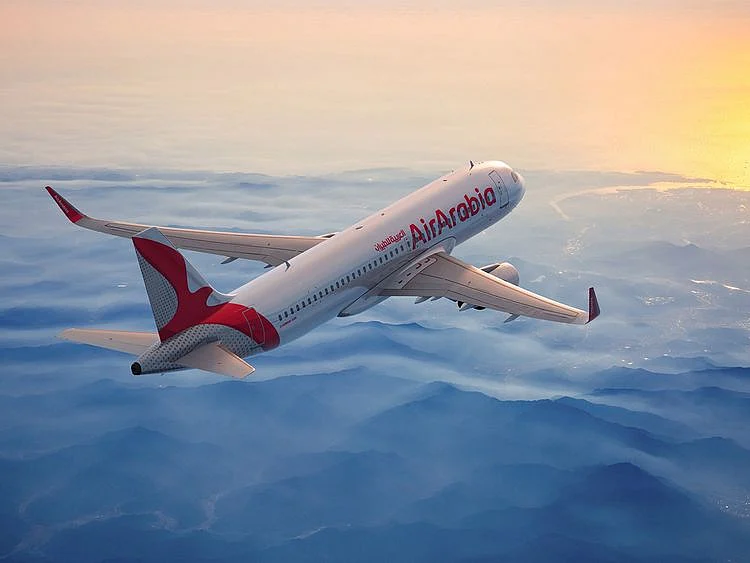UAE’s budget airlines are out to reclaim Gulf skies before summer – and Saudi Arabia is the priority
Air Arabia, flydubai add vital flights to Saudi Arabia and other sectors ahead of Eid

Dubai: UAE’s budget airlines are reclaiming their hold over the Gulf and Subcontinent sectors, with increased frequencies or the launch of new services. The goal – get all available resources well in place for the all-important peak summer travel – the first in two years.
Air Arabia has in the past few days ramped up significantly the number of flights to Saudi Arabia, as did flydubai. Simultaneously, more flights to India will launch over the coming days, while Egypt, Turkey and Morocco will be the other priorities. Air Arabia’s joint venture carrier in Abu Dhabi is also scaling up its India-bound services.
“Low-cost carriers have been busy with re-establishing their networks in a post-COVID-19 recovery phase - with a key focus on regional connectivity,” said Linus Bauer, Managing Director at Dubai-based Bauer Aviation Advisory. “The network expansion will be supported by a growing fleet as they take delivery of more aircraft over the next few months.”
Saudi Arabia – one of the biggest markets for UAE’s airlines– is at the center of this strategy. “With an uptick in regional leisure and VFR (visiting friends and relatives) travel to Saudi Arabia, low-cost carriers will be putting their hope on decent passenger volumes and market share gains in this long-awaited summer season,” said Bauer.
On Wednesday, Air Arabia announced that starting April 28, it will resume direct flights from Sharjah to four Saudi cities - Taif, Al Jouf, Gassim, and Hail. Fares are seen to be within the Dh899 - Dh1,052 range. With the additions, Air Arabia will fly to 11 cities in Saudi Arabia. “Passengers will enjoy flying directly from Sharjah International Airport to these cities, where frequencies will increase during summer,” said the low-cost carrier in a statement.
Budget airline flydubai will resume operations to Ha’il and Tabuk on May 9, which will bring the number of destinations served in Saudi Arabia to 10. flydubai is the first UAE airline to launch flights to AlUla, which is located close to Saudi Arabia’s UNESCO World Heritage site, Hegra.
“The launch of operations to AlUla reflects our commitment to strengthening the cultural, trade and tourism ties between the UAE and Saudi Arabia and opening up new markets to more passengers,” said Ghaith Al Ghaith, flydubai’s CEO, in a statement.
Wizz Air Abu Dhabi, the joint venture between Wizz Air and ADQ, has no Saudi flights yet, but it has plans to launch operations to the Kingdom. The low-cost carrier flies to Oman, Bahrain, Egypt and Israel.
Busiest routes
The Middle East has some of the world’s busiest air routes in terms of number of airline seats deployed, according to monthly numbers released by OAG, an aviation consultancy. In April, the Cairo-Jeddah route took top position with 334,157 seats; Dubai-Jeddah was third with more than 241,000 seats. The Dubai-to-Riyadh services, which had been the world’s busiest in March, dropped to seventh.
Air Arabia Abu Dhabi to launch Mumbai services
Air Arabia Abu Dhabi will introduce a new service to Mumbai, starting May 12. The airline will operate flights to and from Mumbai on Tuesdays, Thursdays and Sundays. Flight 3L 101 will leave Abu Dhabi at 15:00 and reach Mumbai at 19:40. The return flight will depart from Mumbai at 20:30 and land in Abu Dhabi at 22:00. Launched in late 2020, Air Arabia Abu Dhabi is already 'fully profitable' from year one, according to Etihad Airways CEO Tony Douglas.
Future boost
The Middle East’s aviation industry is expected to grow 6 per cent during the period 2022-27, according to Mordor Intelligence, and low-cost carriers will play a huge role. “The latest market analysis suggests that budget carriers such as Air Arabia Abu Dhabi and Wizz Air Abu Dhabi will drive demand for new narrow-body aircraft,” said Danielle Curtis, Exhibition Director M.E. – Arabian Travel Market, in a statement.
Fleet expansion
The rapid growth of the region’s low-cost carriers is driven by new aircraft orders. In 2024, Sharjah’s Air Arabia is expected to start taking delivery of its 2019 order for 120 mostly Airbus A320neo aircraft and the A321neo and A321XLR variants. This is more than double its current fleet of about 52 aircraft.
flydubai will take delivery of 20 Boeing 737 MAX 8s before the end of the year. The carrier still has more than 140 aircraft to be delivered over the next few years from its 2017 order. UAE carriers, meanwhile, are not the only ones looking to expand in the region.
Last month, Saudi budget carrier flynas ratified the company’s strategic plan and approved raising its orders to 250 aircraft. flynas is currently in discussion with aircraft manufacturers in drafting agreements.
flynas will “become the largest low-cost airline in the Middle East and North Africa region” after the conclusion of the agreements, it said.
Sign up for the Daily Briefing
Get the latest news and updates straight to your inbox
Network Links
GN StoreDownload our app
© Al Nisr Publishing LLC 2025. All rights reserved.